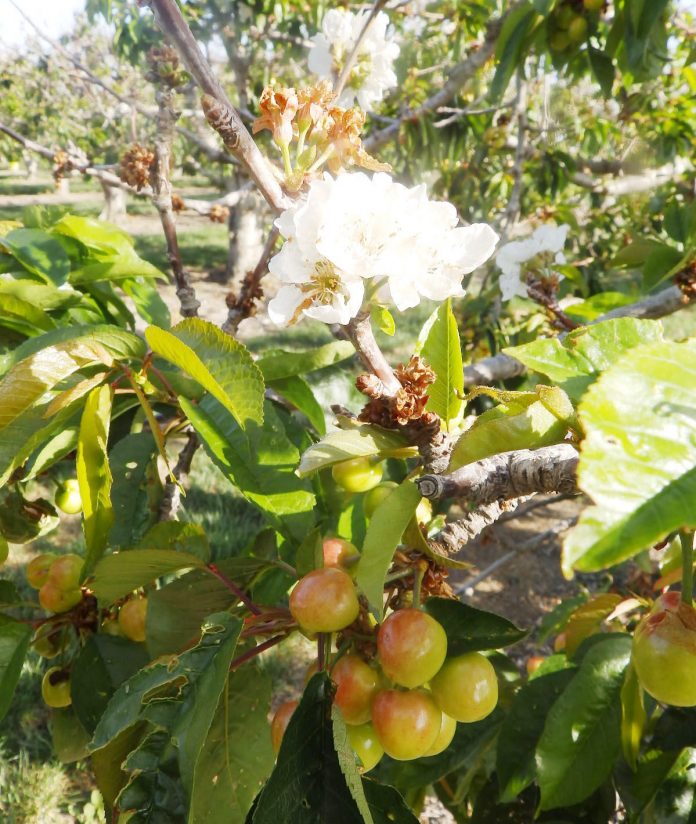George Rajkovich’s Hollister-based Fairhaven Orchards manages about 300 acres of cherry trees sprawling across the San Benito and Santa Clara counties.
But this year, those looking for the tart, crisp, sweet taste of spring might not be purchasing cherries from local farmers.
“There really is nothing out there in terms of a crop this year,” said George’s daughter, Nicole Rajkovich, 40. “There will be very little fruit.”
The Rajkovich family’s cherry trees cover a portion of the 558 acres of the crop grown in San Benito County. Those fruit-bearing trees brought in almost 4.5 million in sales in 2013, according to the county’s most recent crop report.
This year’s poor yield stems from the drought paired with a warm winter and a lack of chilling hours. Fruit- and nut-producing trees, including apples, apricots, walnuts and cherries, need a certain number of “chilling hours”—or 60-minute intervals below 45 degrees Fahrenheit—in order to reach their full potential.
Cherries have one of the highest chilling requirements of fruit trees, according to Bill Coates, a retired farm advisor with the University of California specializing in fruit and nut trees in the Monterey, Santa Cruz and Santa Clara counties. Cherry trees need 800 to 1,000 of the special hours at minimum, according to George Rajkovich. This year, they received 545 of the hours, almost half of the 1,000 hours they’d normally like to see, Coates said.
He started working in the county in 1976. Since that time, he’s seen good years and bad years for chilling hours, but recently he’s seeing a disturbing trend that’s not in the favor of the cherry farmers.
“Now, we’ve had a streak of low chilling winters and maybe it’s becoming more of a norm,” he said.
A fertilizer spray called CAN-17 can be applied to cherry trees in late January or early February to help increase the effect of chilling hours. To get the best effect, the plants need to have gotten at least 70 percent of their needed hours, he said.
Rajkovich found the spray ineffective this time around.
“It didn’t do us any good,” said the farmer. “The chilling hours weren’t there. We sprayed but it didn’t do us a damn good.”
Coates sees the effects of the weather on more than just the local orchards. He noticed that the ornamental cherry trees blooming in the Hollister Post Office’s parking lot responded erratically to the weather with some branches flowering while others were still dormant.
“What you find is, these conditions—warm, dry weather—good for humans, not so good for plants,” he said.
If the same pattern of low chilling-hour years continues, people may need to create new varieties of fruit trees that can still produce with warmer local weather, Coates said. Unfortunately, the process of developing a new variety of tree can take 25 to 35 years, he said.
Lower-than-average chilling hours combined with a fourth consecutive year of drought, which made producing this year’s cherry crop especially difficult. The lack of rain means the Rajkovichs are using well water more, which is richer in nitrates and minerals and is “not the best to use for irrigating the cherries,” Nicole Rajkovich said.
For now, Rajkovich is glad the apricot trees are doing better than the cherry ones. The ranch has just 10 acres of apricots but that crop doesn’t need as many cold days to produce good fruit.
“Our apricot crop is in good condition at the moment. So that’s good news,” she said. “It doesn’t require as much chilling. Still, we would like to have more water, but it didn’t have that issue with the chilling hours.”










